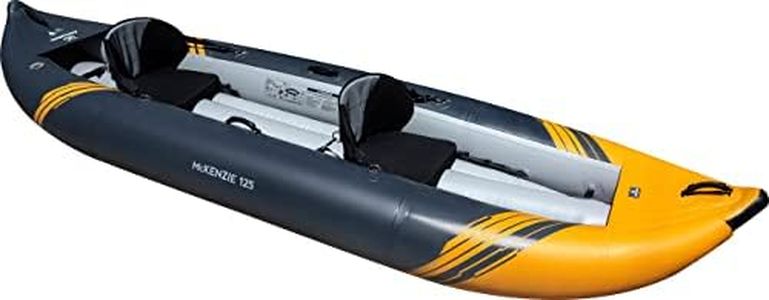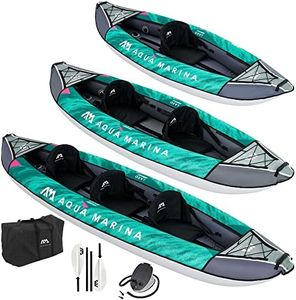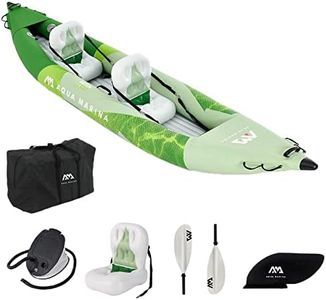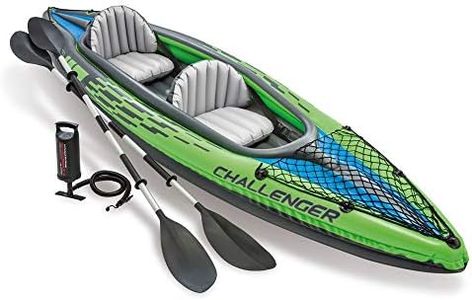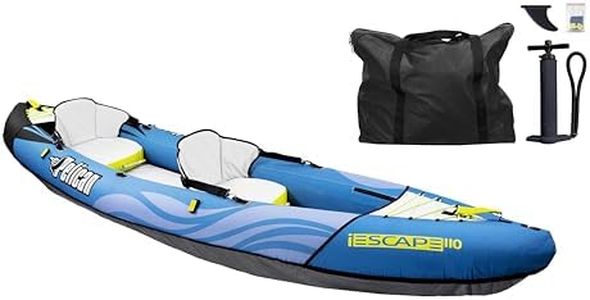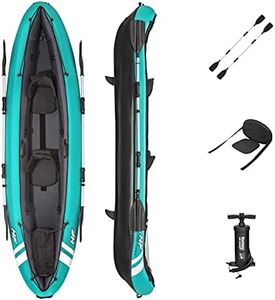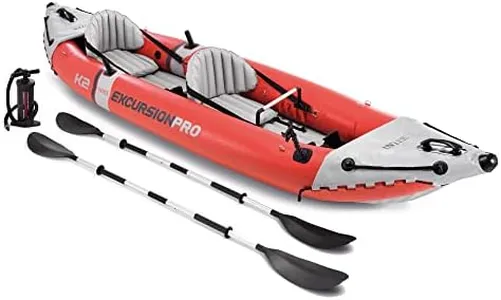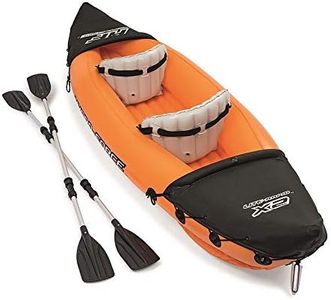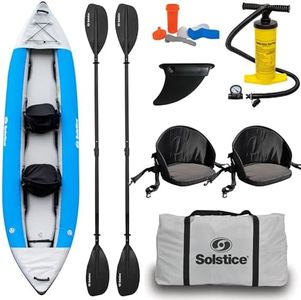We Use CookiesWe use cookies to enhance the security, performance,
functionality and for analytical and promotional activities. By continuing to browse this site you
are agreeing to our privacy policy
10 Best Two Person Kayaks
From leading brands and best sellers available on the web.Buying Guide for the Best Two Person Kayaks
Choosing a two-person kayak is an exciting process that centers around how you and your kayaking partner plan to use it. Whether you’re seeking adventure on rivers, lakes, or the coastline, your perfect kayak will match your intended activity, comfort expectations, and level of experience. To find the right fit, it’s important to balance size, stability, weight, seating options, and storage choices according to your needs.Kayak TypeThis refers to the general design and purpose of the kayak, including options like sit-on-top, sit-inside, inflatable, and tandem fishing kayaks. Sit-on-top kayaks are easy to enter and exit, great for beginners and warm climates. Sit-inside kayaks offer more protection from water and may be better for cooler conditions. Inflatable kayaks are portable and easy to store, ideal for those with limited space or who value easy transportation. If you plan to fish, a tandem fishing kayak can offer specialized features. To pick the right type, think about where you’ll be paddling (calm lakes, rivers, ocean), how often you’ll transport it, and your preference for ease of use versus specialty features.
Length and WidthThe length and width of a kayak affect its speed, stability, and maneuverability. Longer kayaks usually track straight and move faster, making them better for longer trips or open water. Shorter kayaks turn more easily and suit rivers or tight spots. Wider kayaks generally feel more stable, which is reassuring for beginners or those prioritizing steadiness over speed. If you want comfort and stability for leisure trips, a wider, shorter kayak may work well. If you favor covering distance or carrying more gear, a longer, slightly narrower kayak may be best.
Weight CapacityThis tells you how much combined weight your kayak can safely carry, including both paddlers and all of your gear. Choosing a kayak with an adequate weight capacity is essential for safety and performance; overloading can make the kayak less stable and harder to paddle. It’s wise to add up your weight, your partner’s, plus any bags, cooler, or extra items you’ll bring. Select a kayak whose capacity comfortably exceeds your total load to keep your trips enjoyable and safe.
Seating ArrangementSeating arrangement involves whether seats are adjustable, padded, and supportive, and whether the kayak provides room for two adults, or an extra seat for a child or pet. Some two-person kayaks have movable seats, which can add flexibility for solo paddling or extra comfort. If comfort is a priority or you’ll be on the water for hours, look for well-padded and adjustable seats. Consider if you need room for extra passengers (such as a child) or if you want the option to paddle solo at times.
Storage SpaceKayaks offer different types of storage, including hatches, compartments, bungee deck rigging, or open space for gear. If you plan short trips, you may only need minimal storage for essentials like water and snacks. For longer adventures or overnight camping, look for larger, sealed storage areas to keep your bags and equipment dry. Make sure the storage matches your typical trip length and the items you plan to bring along.
Weight of KayakThe kayak’s own weight affects how easy it is to transport, carry, and load onto a car or trailer. Lightweight models are easier for two people to handle, but may sacrifice some durability or capacity. Heavier kayaks can be sturdier and sometimes more stable, but may require wheels or extra help to move. Consider your regular launch spots and who will help you—choose a weight that’s practical for your transport and storage situation.
MaterialThe material determines the kayak’s overall durability, weight, and maintenance needs. Plastic (polyethylene) kayaks are durable and affordable, but heavier. Fiberglass and composite materials are lighter and often move better in the water, but require more care. Inflatable kayaks are made from robust, puncture-resistant PVC or similar fabrics and are great for portability. Choose a material based on your storage, transport, and frequency of use preferences.

